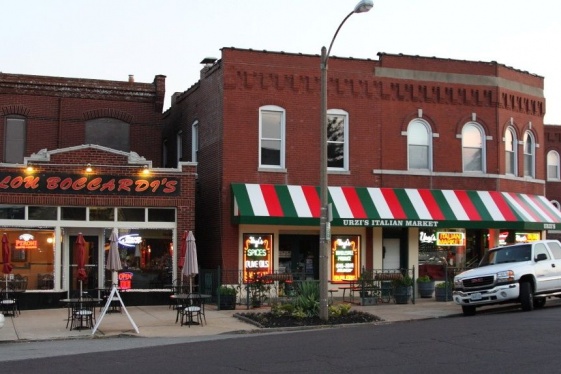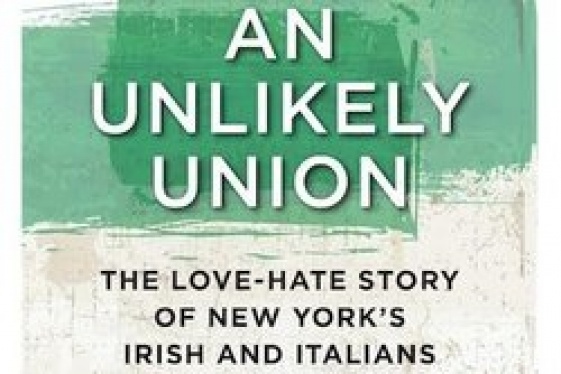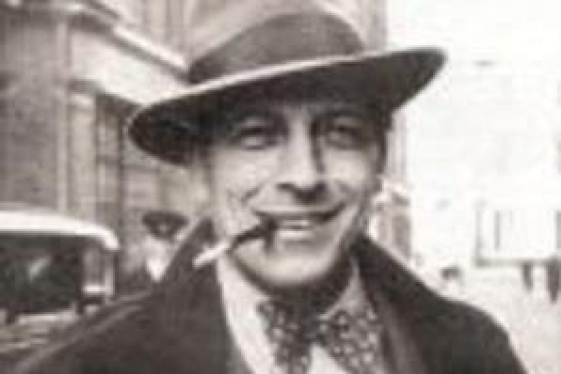
Teresa Fava Thomas (Author of "Arresting the Padroni Problem and Rescuing the White Slaves in America: Italian Diplomats, Immigration Restrictionists & the Italian Bureau 1881-1901")
Gli schiavi italiani negli Stati Uniti: il "Padrone system"

These are difficult times for Italian Americans, but maybe they always have been. Ever since they arrived, Italians who emigrated to America have very often been treated with contempt, and have worked very hard to earn the respect that is due to them, sacrificing their lives, giving hard work and talent and beauty and excellence to the United States. Today a stupid narrative pretends - blatantly mistakenly - to put the celebration of the hero they legitimately chose, Christopher Columbus, against the rights of African Americans, manipulating the murder of an innocent man like George Floyd and taking it out on those who did him no harm.
On the contrary, if there is an ethnic group that in its history in America has traits similar to those of the African American experience, that is precisely the Italian American ethnic group. There was open talk of Italian slaves, in the 19th century in America: and the exploitation of our compatriots had a very precise name, the Padrone system. A prestigious Italian American scholar, Professor Teresa Fava Thomas, tells us about this and we thank her very much for helping us to better understand one of the various reasons why it is so absurd that today someone is exploiting the sufferings of African Americans by attacking the symbol of Italian Americans.
Prof. Thomas, what was the “Padrone system”, and why was it called that?
There are a number of issues within that phrase: the earliest evidence of the Padrone system, was the practice of persons in 19th century Italy offering to educate children in music with a contract for them under the guidance of a padrone as something like an apprentice. But, this gave the padrone the right to take the children away from home and bring them to where they would perform: often on street corners in major European cities where they played music and begged for money. The parents were led to believe they were giving the children to the guidance of a teacher their parents thought they could trust. The reality was that children were under the control of someone who might indeed teach them to play an instrument, but for the purpose of becoming at best a street musician in London or Paris but more often taught to bring money to the padrone.
Later the term was applied to bosses who recruited laborers in Italy by offering them promises of good jobs in America and a free steamer ticket. But the trap was they had to sign labor contracts that put them under the control of the padrone and often led them to heavy “pick and shovel” work on construction projects where their pay was under the padrone’s control and the contract never seemed to be paid off. Some padrones let their workers off after some months but others were unscrupulous and kept them in conditions near to slavery. The promise of free passage on steamships to America in 1880s was alluring. The young men later found themselves tied to jobs which were supposed to pay off their debt but never seemed to let them free. Some people ended up working for years on large public works projects for little money. The Society for the Protection of Italian Immigrants discovered one group supervised by armed guards on a railway project.
The United States regarded these padrone contracts as indentured servitude, which was illegal in the USA since the Thirteenth Amendment to the Constitution of the United States was ratified in 1864. In response to these abuses the Congress legislated against the padrone system in 1885 under what became known as the Alien Contract Labor Act or Foran Act. The government in Rome also tried to stop it since the recruitment usually happened in poor districts of Italy where young men were desperate for a way to earn a living in America.
The latter stages of the padrone system involved some Italians who operated stores, sold steamer tickets and exchanged money, and even operating informal “banks” which took the hard-earned money from Italians immigrants, and often the savings they had hoped to send home.
Italian immigrant workers quickly built a reputation as good employees who worked hard and saved their money to send home to parents, spouses and family in Italy. Unfortunately, their savings were targeted by padroni who promised to perform banking services but more often the money was skimmed off or the banker disappeared. There was a struggle to regulate these padrone banks and to protect workers’ savings.
What happened in 1874 with the bill named “Padrone Act”?
The most immediate concern in America was the welfare of children whose parents had, most often without knowing the reality, signed them to apprenticeship contracts that were exploitive and to the fate of immigrant laborers under labor contracts that made them close to slaves.
Journalists and social reformers published articles about the reality of immigrant life in America, and it led to reforms. The 1874 legislation was focused on the child labor contracts and banned them on the same ground of involuntary servitude since the reality was these persons often were exploited.
Some say that the Italians who immigrated to America in the XIX century were treated as slaves, especially children, and the expression “white slaves” or even “Italian slaves” was actually used at that time. Is that an exaggeration, or is any of it true?
Those terms were definitely used in newspaper articles and magazines. Schiavi (slaves) is a term that came from that era and etchings of children working as street musicians and being abused were often in the press then.
One of the earliest reformers, in 1840s London, was political philosopher Giuseppe Mazzini. He worked to keep Italian immigrant children safe by establishing his own school, The Italian School of London, for boys. Mazzini offered free education in a variety of subjects for young persons who worked in the city of London near the Clerkenwell area.
Historian John Zucchi’s book The Little Slaves of the Harp, documents how the term schiavi was applied to these children and the efforts to end their mistreatment in Paris, London and New York. Mazzini’s emphasis on education as the key to protecting them was also used here in the United States by an American reformer, Sarah Wool Moore, who had studied art and lived in Italy.
Between 1900-1911 Sarah Wool Moore did a great deal to protect and educate Italians in America and to make their lives better. Her closest professional associate was a lawyer, Gino Carlo Speranza, who wrote a number of articles describing the struggles of Italian immigrants in America. Perhaps the most important was “How it Feels to Be A Problem” which asked for an understanding of the struggles of pick and shovel laborers. Speranza also wrote about the legal protections which they needed in “The Alien in Relation to Our Laws” in 1914. He argued the immigrants should learn English and pursue naturalization as American citizens since that offered them more legal standing and protection.
Moore helped organize the “Society for the Protection of Italian Immigrants” in New York State, and another office opened in Boston, Massachusetts by Rev. Gaetano Conte. Moore wrote an Italian-English book for adult laborers to learn the key terms for safety on the job site and in life. Her greatest accomplishment was to organize volunteer teachers and establish what she called “Camp Schools” for educating laborers and their families on construction projects throughout New York and Massachusetts. She raised funds to help them and committed her own life to teach in these remote areas where she died in 1911.
Social reformers like Jacob Riis investigated poor children living on their own in New York, in “How the Other Half Lives”, his book with photographs documenting the hard life of the immigrant poor in America, published in 1889. Perhaps the most shocking expose was written by Jacob Riis about a group of young Italians living on the streets of Hell’s Kitchen in New York, Real Wharf Rats published in the New York Sun newspaper of March 1892. The worst of it was that Riis was a photographer who wrote the story but included real images of the horrors of the poorest immigrants. Harper’s Weekly and other notable journals described the hardships of the poor.
What was “Italophobia”?
This is a term used to express the hostility directed at Italian immigrants in America as their numbers expanded in the 1880-1920 great migration. The negative stereotype in America limited their acceptance in society and made it very hard for first and second generation Italians in America to get better jobs, to be accepted to universities and build careers in the professions, especially law, science and medicine. Historian Joseph Cosco has written a very interesting book on the power of stereotypes called “Imagining Italians”, and he points to the power of negative images of Italians in films and television as powerful forces that hinder advancement.
Cosco contrasted the stereotype of Italians and the mafia with the other side, which he termed Italophilia, meaning that a part of American society highly valued Italian music, language and culture. Unfortunately the power of the negative stereotype was often more powerful than Italophilia.
Since the 1970s in the New York university system there have been a series of class action lawsuits involving discrimination against Italian Americans in hiring and promotion, including the case Scelsa vs. City University of New York in 1992. Italians are now a group who are actively recruited and promoted in that educational system and they have the John Calandra Italian American Institute which sponsors educational programs, publications, and academic conferences.
What was at that time the role of the (first ever) Italian Ambassador in Washington DC, Baron Francesco Saverio Fava, to fight the “Padrone system”? And what was the Italian Bureau at Ellis Island?
First, Ambassador Fava is no relation to me. I greatly admire all he accomplished as the first Italian ambassador to the United States and he established Italy’s first embassy in Washington, D.C. He was one of the most effective advocates for Italian immigrants in America during his years here between 1881-1893. As a diplomat he sought to protect Italian immigrants in the labor market and to assist them to get settled here, with the goal that they would own property and farm. He had also tried to encourage the settlement of Italians in Arkansas in a place called Tontitown and another called Sunnyside; but neither succeeded in the long run.
Ambassador Fava aimed to guide Italians right just as they arrived in America, and to that end he established an office on Ellis Island called the Italian Bureau. His staff established their office with the goal to guide immigrants, sometimes called “greenhorns” because they had no experience in America. The strategies they used to help Italian immigrants get the right start in America included guiding them to jobs where honest employers would treat them fairly, and to help them buy train tickets and get settled in boardinghouses without being exploited.
Ambassador Fava’s staff, including Egisto Rossi and Count Alessandro Oldrini, who operated the Italian Bureau and they intervened to translate for Italian immigrants and to help them deal with the American officials who ran the Ellis Island Immigration Station. But Fava’s efforts were caught up in the drive by some Americans called “immigration restrictionists,” who argued Italians were willing to accept the lowest wages and were taking jobs away from Americans. In reality, few Americans would work on these difficult and dangerous construction projects, like the Ashokan Dam in New York State and the Wachusett Reservoir project in Massachusetts. A group called the Immigration Restriction League was formed in Massachusetts and worked to, as they said, “guard the gates,” at Ellis Island. In large part due to their influence the Congress decided to close the Italian Bureau in 1900. The IRL also encouraged a group led by Senator Dillingham to restrict immigration from Italy in the 1910-20s.
Ambassador Fava was also in charge when eleven innocent Italians were lynched in New Orleans. Can you please briefly describe what happened?
Perhaps Ambassador Fava’s efforts to protect Italians after the 1891 violence in New Orleans is his most notable accomplishment. He denounced lynching and demanded the American government compensate the families of the victims and that Congress legislate against lynching and make it a federal crime.
Most Italian immigrants who arrived in America settled in the major cities of Boston, New York, Philadelphia, Chicago, as well as the farming regions of California. A relative few settled in the American south and those living in New Orleans were caught in racial stereotypes and economic conflict. The research on this event was documented by Richard Gambino in his book Vendetta, telling the story of how 11 Italians were accused in 1891 of killing the New Orleans police chief on very slim evidence. The accusation was made against them as a group rather than any individual. A number of Italians were rounded up, jailed, some tried and then acquitted; but at the last moment they were held in the jail. A mob was incited to attack the jail and kill them. Some of those persons targeted for lynching were poor Italians but they also included Joseph Macheca, from a wealthy Italian American family involved in fruit importing and shipping. The result was a terrible massacre and official protests by Ambassador Fava on behalf of the families of the victims, both Italian citizens and naturalized Americans.
That wasn’t the only lynching of Italians in the US, right? What happened after the one in 1891?
Rome ordered the ambassador to return home, and the break in relations between Rome and Washington might have led to war at a time when the Italian Navy was a very powerful force. One American naval official told the press the US Navy “was in no shape for war.”
The US government limited Fava’s demands for compensation for the families and refused to legislate on the federal level against lynching. Ambassador Fava wrote a number of articles against this violence, including, “I linciaggi negli Stati Uniti: La questione giuridica” in Nuova antologia 1902.
Later events included lynchings of Italians in Colorado, Louisiana, Mississippi, Florida and Illinois. In 1894 over 200 Italian immigrants were driven off from a work site in Altoona, Pennsylvania.
A central figure in these events is that of a … bizarre Italian, Celso Cesare Moreno...
Yes, while Ambassador Fava and his Embassy staff tried to protect Italian immigrants in America they themselves came under irrational attacks which were regarded as libelous by the courts. Eventually Moreno’s wild accusations led to a libel trial in 1895.
Moreno had claimed he wanted to defend Italians but had real animus against the Italian embassy and its staff. Scholars Rudolph Vecoli and Francesco Durante have also written about Moreno in Oh Capitano!
But in the end Moreno’s public attacks led to a Congressional investigation of the Italian Bureau at Ellis Island which closed it at a time when Italians were seen as keen competitors in the American job market. Senator Dillingham’s Industrial Commission in Congress held hearings about the competition which American labor had from immigrants, and they were concerned that Italians were willing to work for less and save more to send home to Italy.
Moreno is a complex character and his motives were very strong but difficult to understand. Although he was trying to help Italians his focus on attacking Ambassador Fava and his staff was counter-productive. He did far more harm than good. When you read Moreno’s book, “History of a Great Wrong”, you can see the intensity but also come to understand that his charges against the Embassy staff were quite wild and unsubstantiated.
One last question, Professor. As we have seen, Italian immigrants were exploited, targeted, discriminated, humiliated and even lynched. Their descendants, good hardworking people who know well and honor their history and sacrifices on a daily basis, are today accused to be part of the white élite who oppress minorities. Those who do that vandalize the statues of Columbus, the symbol the Italian Americans have chosen to represent their suffering; and they brutalize the churches those Italian Americans have built to celebrate their religion. These violent acts have accelerated after the brutal murder of an innocent African American man where, however, no Italian American did play any role. Does that make sense to you?
In contemporary times the statues of Columbus have come under attack and this has occurred over a number of years.
Perhaps the way to honor Italians in America is to consider the accomplishments of the many generations of Italians in America, especially the sons and daughters who have served in the American military, and who are now often are represented today in all of the professions. In writing my book, “The Reluctant Migrants: Migration from the Italian Veneto to Central Massachusetts”, I found that from one small Italian American church here, St. Anthony’s, hundreds of young men and women served America in the Second World War and 15 died in service. Their descendants are doctors, lawyers and professors as well as restauranteurs and business owners.
The Italiophilia or fascination with Italy’s language, art and music today expresses how some people in America have traveled to Italy or want to travel there. University students can now complete a minor or even a major in Italian studies at a number of universities in America. Many now host special programs in Italian language, history, music and culture because the power of Italianità attracts the interest in travel to Italy and to be able to take pleasure in the music, food and culture as well.
Today Italianità is a powerful force for good in attracting people to study the language but also to travel home to Italy. After my first visit back to Italy (all four of my grandparents are from the Veneto region) I was determined to keep revisiting Italy and have been fortunate to often return there. Fitchburg State University, where I am a professor of history, hosts the Center for Italian Culture, which was endowed by an alumna, Amelia V. Gallucci-Cirio. The CIC promotes Italian language study and a Study Abroad program for our students in Verona, Italy. I spent a summer in Verona with a group of young people who, whether or not they had Italian ancestors, loved being there and had a life-changing experience. I also teach a course for retired people called “Five Best Italian Travel Cities”, which is a guide to visiting some of the most beautiful places in Italy. If I could do one thing I would encourage more exchanges between Italians and Americans so that we could all better understand the beauties of Italy and Italianità.
You may be interested
-
“The Hill” St. Louis’ Little Italy
When the fire hydrants begin to look like Italian flags with green, red and white stripes,...
-
An Unlikely Union: The love-hate story of Ne...
Award-winning author and Brooklynite Paul Moses is back with a historic yet dazzling sto...
-
Cathedral of St. John the Divine, Oratorio S...
For the first time ever, The Cathedral of St. John the Divine, in collaboration with the O...
-
Davide Gambino è il miglior "Young Italian F...
Si intitola Pietra Pesante, ed è il miglior giovane documentario italiano, a detta della N...
-
Garibaldi-Meucci Museum to Celebrate Ezio Pi...
On Sunday, November 17 at 2 p.m., Nick Dowen will present an hour-long program on the life...
-
Italian Master Drawings From The Morgan (Onl...
The Morgan Library & Museum's collection of Italian old master drawings is one of the...
-
Italian Women Trailblazers - Young Professio...
April 16, thursday - 6,30 EDTAzure - New York, NY - 333 E 91st St, New York 10128Tick...
-
La Befana makes her way to the Garibaldi-Meu...
Saturday, January 10at 2:00pm - 4:00pm, Garibaldi-Meucci Museum 420 Tompkins Ave, Staten I...





























